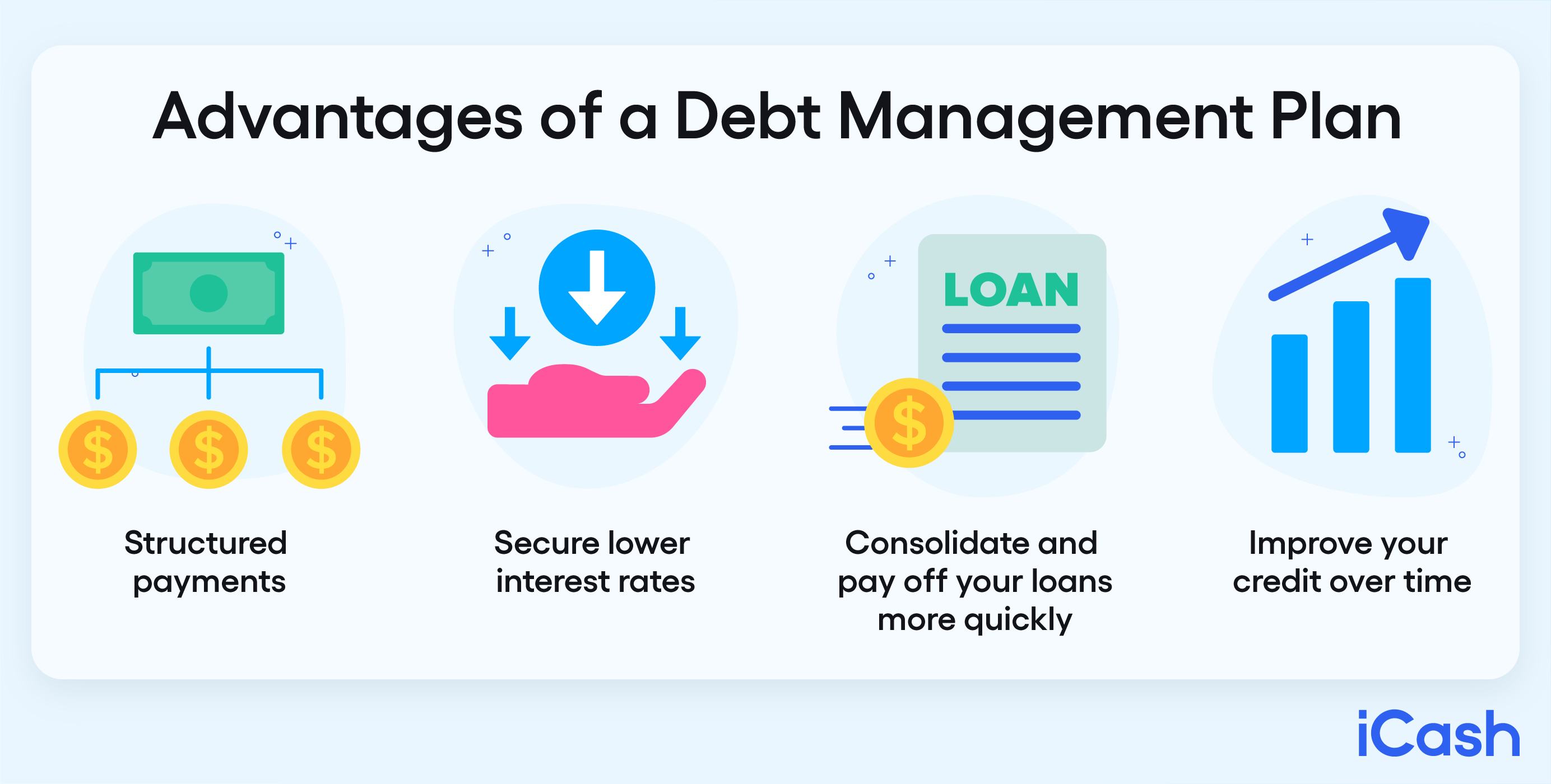The Comprehensive Overview to Creating and Executing a Reliable Financial Obligation Administration Prepare For Lasting Debt Alleviation

Evaluating Your Financial Obligation Circumstance
When starting the journey to produce an effective debt management plan, it is vital to start by completely analyzing your existing financial debt situation. More Discussion Posted Here. This initial step is crucial as it provides a clear understanding of the extent of your debts, the rates of interest connected to each financial debt, and the minimal regular monthly repayments needed. By putting together an extensive list of all your debts, consisting of charge card, financings, and any kind of other exceptional balances, you can obtain insight into the complete quantity owed and focus on which financial debts to deal with first
When evaluating your debt scenario, it is crucial to examine your income and expenditures to figure out exactly how much you can reasonably allocate in the direction of financial obligation repayment every month. This examination will aid you produce a budget that guarantees you can fulfill your financial debt obligations while still covering essential living expenditures. Furthermore, by recognizing any type of unneeded costs that can be reduced or gotten rid of, you can liberate a lot more funds to put in the direction of paying off your financial obligations efficiently.
Establishing a Budget Plan
To effectively handle your funds and achieve your financial obligation settlement goals, it is important to create a comprehensive budget plan. A budget plan functions as a roadmap for your economic health and wellness, describing your revenue, expenses, and cost savings goals. Begin by computing your complete monthly income after taxes. This includes your income, any extra resources of revenue, and federal government advantages. Next off, checklist all your fixed expenses such as rent or mortgage, utilities, insurance coverage, and lending repayments. Variable expenses like groceries, enjoyment, and transportation should additionally be accounted for by approximating an average month-to-month cost. Distinguish between wants and needs to focus on vital costs while recognizing locations where you can cut down. Allocate a portion of your income in the direction of financial savings and a reserve to prevent accumulating even more debt in instance of unanticipated costs. Consistently testimonial and change your budget as required to remain on track in the direction of attaining economic stability and successfully handling your financial obligation.
Bargaining With Lenders
Involving in conversations with financial institutions is a pivotal step in proactively dealing with and solving superior debt obligations. Beginning by collecting all relevant information about your debts, including account details, outstanding balances, and interest rates.
During negotiations, be straightforward about your financial challenges and connect honestly concerning your readiness to repay the debt. Financial institutions are usually happy to collaborate with people that show an authentic effort to fix their obligations. You can discuss potential alternatives such as reorganizing the repayment plan, working out a lower rates a knockout post of interest, or perhaps working out the debt for a reduced quantity.
Keep in mind to document all interaction with financial institutions, including agreements gotten to, layaway plan established, or any adjustments to the regards to the debt. By involving in useful discussions and getting to equally beneficial arrangements, you can lead the way in the direction of sustainable financial debt relief and economic security.

Implementing Financial Debt Payment Strategies
A crucial element of managing financial debt efficiently is the execution of well-thought-out settlement techniques. When applying debt settlement techniques, it is crucial to start by focusing on debts based on variables such as rate of interest prices, outstanding balances, and financial institution terms. One common technique is the financial debt snowball technique, where you concentrate on repaying the smallest financial obligations initially while making minimal payments on larger financial obligations - More Discussion Posted Here. This approach can provide a sense of achievement as financial debts are paid off, encouraging you to continue the process.
Another technique is the financial obligation avalanche method, which entails prioritizing debts with the highest rates of interest to minimize the overall interest paid over time. By taking on high-interest financial debts initially, you can conserve money in the future. Whichever approach you pick, uniformity in making repayments is crucial to effectively minimizing financial obligation. Establishing up automated settlements or producing an in-depth payment schedule can help you stay on track and stay clear of missed out on repayments. Monitoring your progression regularly and readjusting your methods as needed will make certain that you are successfully managing your debt and functioning in the direction of monetary freedom.
Tracking and Adjusting Your Strategy
Consistently evaluating and adjust your debt monitoring plan is vital for maintaining monetary security and achieving your long-lasting objectives. Monitoring your plan entails tracking your development, reviewing your budget on a regular basis, and staying updated on your impressive debts. It is important to check your strategy to ensure that you are on track to satisfy your settlement objectives and make any essential adjustments as your monetary circumstance adjustments.
One means to monitor your debt administration strategy is by consistently reviewing your budget and Read Full Report costs to determine locations where you can reduce expenses and allocate more funds towards financial obligation payment. By tracking your investing behaviors and reassessing your spending plan periodically, you can make informed decisions on how to optimize your debt repayment strategy.
In addition, monitoring your plan enables you to stay motivated and concentrated on your economic goals. Celebrate small victories along the road, such as repaying a bank card or continue reading this lowering a substantial section of your financial debt. These landmarks can keep you motivated and committed to adhering to your financial debt monitoring prepare for sustainable debt alleviation.
Final Thought
Finally, creating and executing a reliable financial obligation administration plan calls for a detailed evaluation of your debt scenario, the advancement of a budget plan, arrangement with lenders, implementation of financial debt payment techniques, and continuous tracking and adjustment. By adhering to these steps, people can accomplish sustainable financial debt relief and take control of their economic future.
With careful preparation and tactical decision-making, crafting a thorough financial obligation management strategy is not only attainable but likewise important for lasting financial obligation alleviation.When embarking on the trip to create an efficient debt administration strategy, it is important to start by thoroughly examining your current financial obligation scenario. When executing financial debt repayment techniques, it is crucial to start by prioritizing financial debts based on factors such as rate of interest prices, outstanding balances, and financial institution terms. One common method is the financial obligation snowball approach, where you focus on paying off the smallest financial obligations initially while making minimal payments on larger financial obligations. These landmarks can maintain you motivated and devoted to sticking to your debt management plan for sustainable financial obligation alleviation.